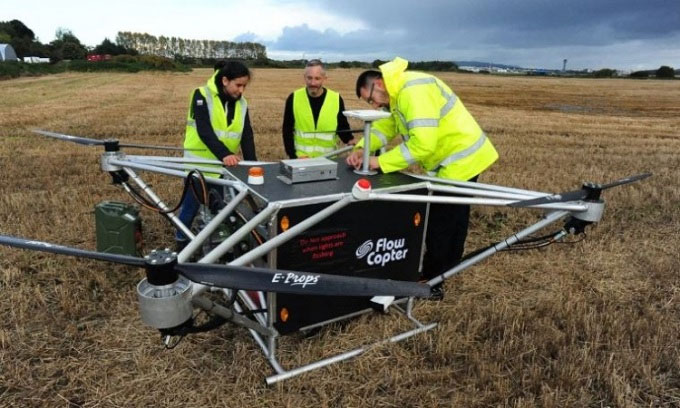The multi-rotor drone operated by a hydraulic system from Flowcopter has a range of 900 km and can carry 150 kg of cargo.

Flowcopter begins testing its hydraulic drone model. (Photo: Flowcopter)
Multi-rotor helicopters can lift heavier cargo and remain airborne longer if powered by high-density energy sources like gasoline instead of low-density lithium batteries. However, gasoline engines often do not respond quickly enough to maintain the vehicle’s balance when wind shifts rapidly. Flowcopter, based in Edinburgh, has developed a new solution with the world’s first hydraulic multi-rotor helicopter. The company’s heavy-lift drones will use internal combustion engines that drive a digital metering pump to operate hydraulic motors.
These pumps can distribute and coordinate hydraulic flow across various power levels with a digital controller, providing an almost instantaneous response time to balance the drone during flight. Each hydraulic motor delivers up to 96 kW of power, weighing only 5.5 kg and costing less than $1,000.
While the weight of the digital metering pump, internal combustion engine, and fuel system can be considerable, the use of gasoline offers a higher energy density compared to lithium, providing more benefits than drawbacks, according to Flowcopter’s estimates. The company states that the new multi-rotor helicopter model can operate for 6 hours on a full tank of gas and has a range of 900 km. The vehicle can carry 150 kg of cargo on shorter trips.
Flowcopter has built a prototype and conducted tethered flight tests. Although slightly unsteady, the prototype successfully took off.

















































